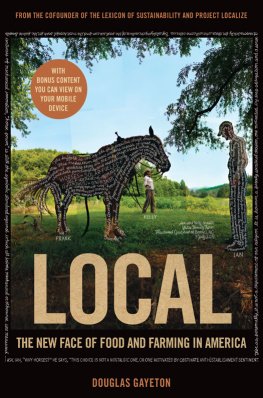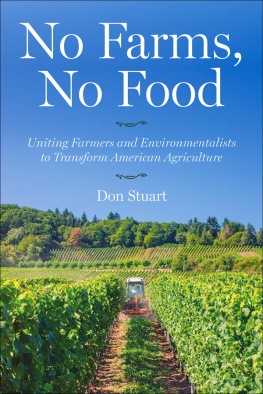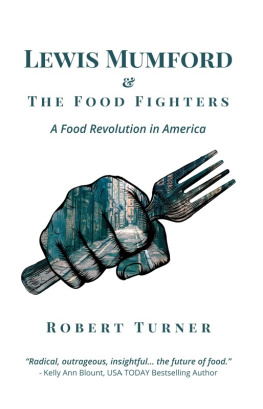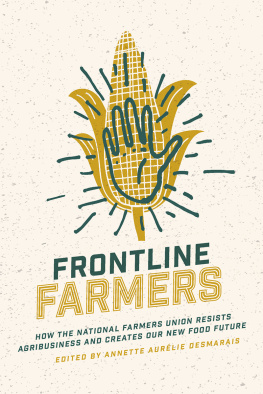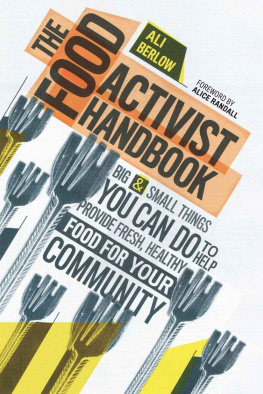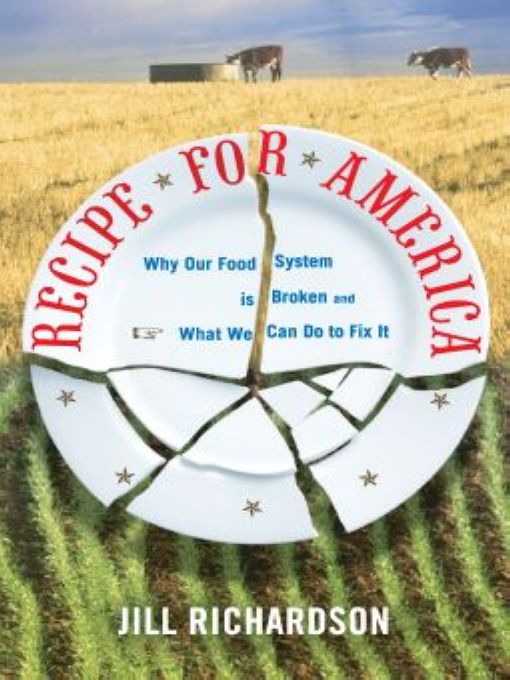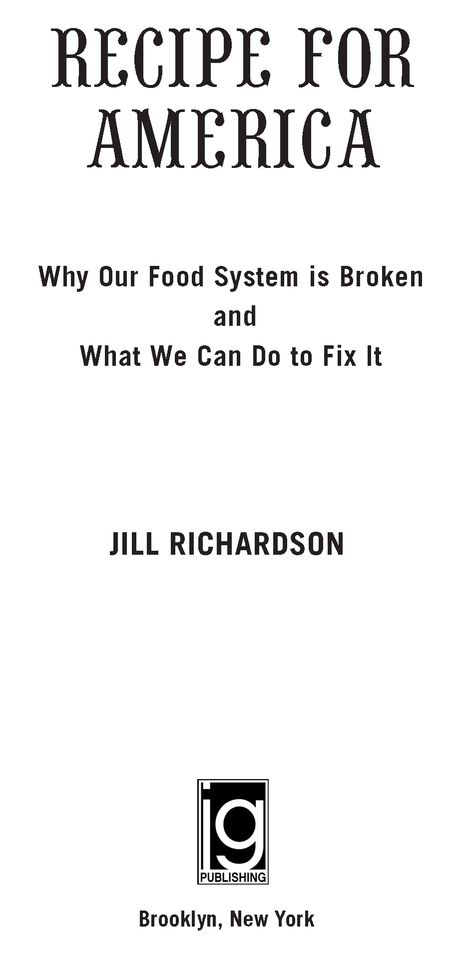Table of Contents
Dedicated to Eddie C and Jonny, and in loving memory of my brother Adam.
INTRODUCTION
In March 2006, after reading several articles about the obesity epidemic in America, I decided to write a post about the issue on the popular political blog Daily Kos. To my shock, my post received over 600 comments! Obviously, I had hit on an issue that was on peoples minds. While I realized that obesity was a result of poor diet, little exercise, and perhaps genetics, I wanted to learn why it had become so prevalent in this country over the past twenty years. After all, it wasnt like fast food chains like McDonalds, or soft drinks like Coca-Cola were new to the marketplace.
To try and find the answer to the obesity problem, I read one book after another, from The Omnivores Dilemma by Michael Pollan to Appetite for Profit by Michele Simon to Fat Land by Greg Critser. The explanations these books offered for our national eating problem were numerous, which made me realize that there wasnt one single problem that contributed to the obesity epidemic, but several: marketers had gotten savvier; government policies now favored the production of cheap food; cash strapped schools had cut their gym programs and outsourced their lunch programs to fast food companies; and, as fewer families had stay-at-home parents, a higher percent of food was consumed outside the home.
I also discovered that the problem wasnt obesity alone. Pollans book in particular made it clear that the same factors that had allowed our waistlines to expand also harmed the environment, rural communities, and agricultural animals. I began to realize that we had a food system, and that trying to solve the obesity problem without considering the effects that system had on the environment and the economy would be a waste of time. Yet, thats exactly what we do. While congressional hearings on obesity talk about limiting sugary beverages in school vending machines, they never discuss the fact that we devote only slightly less land to growing corn for high fructose corn syrup (1.2 percent of U.S. cropland in 2007) than we do to growing vegetables (1.5 percent) or fruits (1.6 percent). As long as were producing too much junk and not enough healthy food, making small changes in how that food reaches consumers wont change anything.
So what are the solutions, then? Some books, like Diet for a Small Planet by Frances Moore Lappe or Animal, Vegetable, Miracle by Barbara Kingsolver offer detailed steps that individuals can take, from changing their diets to growing their own food. Other books, like Food Politics by Marion Nestle or The Omnivores Dilemma, advocate political change, but do not provide the details necessary to make that change a reality. Joel Salatins Everything I Want to Do is Illegal offers the impression that everything would be better if the government would just leave farmers alone, but I dont subscribe to Salatins Libertarian philosophy. And Food Fight by Dan Imhoff provides very specific information about the farm billbut the farm bill is just one part of our overall food policy, and it only comes before Congress every five to seven years. Ultimately, I had collected an entire shelf of books on food, but none of them told me what kind of policies we needed to fix the problems in our food system. So, because that book didnt exist, I decided to write it myself.
Recipe for America is the book I wish I could have read three years ago, when I first began pondering Americas problem with obesity. The first two chapters describe our current mainstream food system. Chapter one details my experiences as an eater, trying to achieve the not-as-straightforward-as-it-should-be goal of eating delicious, affordable, accessible, and healthful food. Chapter two tells how we have reached the point where healthy food is so difficult to obtain by providing a history of chemical agriculture and a description of the problems it causes.
Since this book is ultimately about solving the problems in our food system, chapter three describes that solution: sustainable agriculture. In that chapter, I talk about what goes on in the soil, and how it affects plants, animals, the environment, and ultimately, the food we eat. One of the biggest misconceptions about organic or sustainable agriculture is that it simply involves removing the chemical inputs from the soil, or replacing them with organic inputs, like worm castings instead of ammonia fertilizer. However, without a full understanding of how and why sustainable agriculture works, it is very difficult to defend it against those who advocate for chemicals or industrial agriculture.
Chapter four looks at the development of organic standards, which has allowed for the birth of Industrial Organics: certified organic foods sold by major corporations that are technically organic but not always sustainable. (As you will see, sustainable always means organic, but organic does not always mean sustainable.) Chapter five describes the various movements around the country that promote sustainable agriculture, while chapter six answers a question I hear asked all the time: if sustainable agriculture is so great, why isnt everyone doing it?
Unfortunately, supporters of sustainable food face numerous obstacles, some caused by nature, others that are man-made. The remaining chapters therefore detail my plan for removing as many of these barriers as possible so that we can grow the sustainable food movement while simultaneously regulating industrial agriculture so that society no longer pays the price for its pollution, adverse health effects, abusive labor practices, and deceitful marketing. Ive divided the plan into different categories: labeling, food safety, protecting children, human and animal rights, and the farm bill. Many of the recommendations I make reflect political battles that have been raging for, in some cases, decades. My effort here is not intended to imagine new policy ideas, but to organize and explain the ideas that are backed by experts and agreed upon (more or less) by the different groups within the sustainable food movement, and then explain how you can take action on these ideas. However, where I see gaps in existing ideas, I propose my own. Also, in some cases, while I could have gone a little bit further in what I am pushing forfor example, while I would like the U.S. government to ban the use of rbGH (an artificial growth hormone given to cows) in our milk, I call for allowing dairies to label their products as rbGH-free because I do not see the political will at this time for banning the hormone. Since there are literally infinite battles to wage, I think it is best to focus our limited resources on picking the fights that are winnable.
Speaking of fighting battles, in the three years I spent researching and writing this book, I made one very surprising discovery: our government is a whole lot more accessible than I would have ever imagined. It is easy to watch congressional hearings online or call a senators office and speak with a member of his or her staff. You can also sign up online to receive emails when particular bills are moving through Congress, making it relatively simple to follow many different issues at once. And the USDA publishes an enormous array of data about every aspect of our food system, all available online. (In the appendices of this book, I share what Ive learned about getting involved in our food democracy.) I hope that once you have finished


